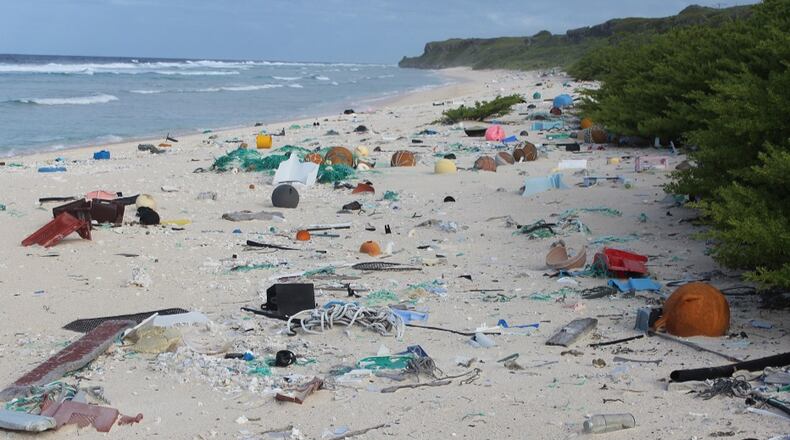Millions of pieces of colorful plastic cover the once pristine beaches on a remote South Pacific island.
Scientists were astonished when they visited tiny, uninhabited Henderson Island, located between New Zealand and Chile, and found 38 million pieces of garbage, mostly plastic, strewn along the sandy shores.
During the recent scientific expedition to the island, which researchers visit only every five to 10 years, they measured the highest density of trash per square meter ever recorded.
The report on the expedition was published this week in the Proceedings of the National Academy of Sciences.
Lead author, Jennifer Lavers, is a research scientist at the University of Tasmania in Australia.
"What's happened on Henderson Island shows there's no escaping plastic pollution even in the most distant parts of our oceans," Lavers said in an article on the university's website.
"Far from being the pristine 'deserted island' that people might imagine of such a remote place, Henderson Island is a shocking, but typical example of how plastic debris is affecting the environment on a global scale," she said.
Garbage piles up on the beaches of Henderson, because it is located in the center of what's called the South Pacific Gyre, a vortex of ocean currents that carry debris from South America and garbage thrown overboard from fishing boats, Lavers explained.
Lavers estimated more than 3,500 pieces of trash wash up on the island every day.
“Plastic debris is an entanglement and ingestion hazard for many species, creates a physical barrier on beaches to animals such as sea turtles, and lowers the diversity of shoreline invertebrates,” she said.
More than 200 species are known to be at risk from eating plastic and more than half of the world's seabirds are at risk from ocean debris, according to scientists.
About the Author
The Latest
Featured


